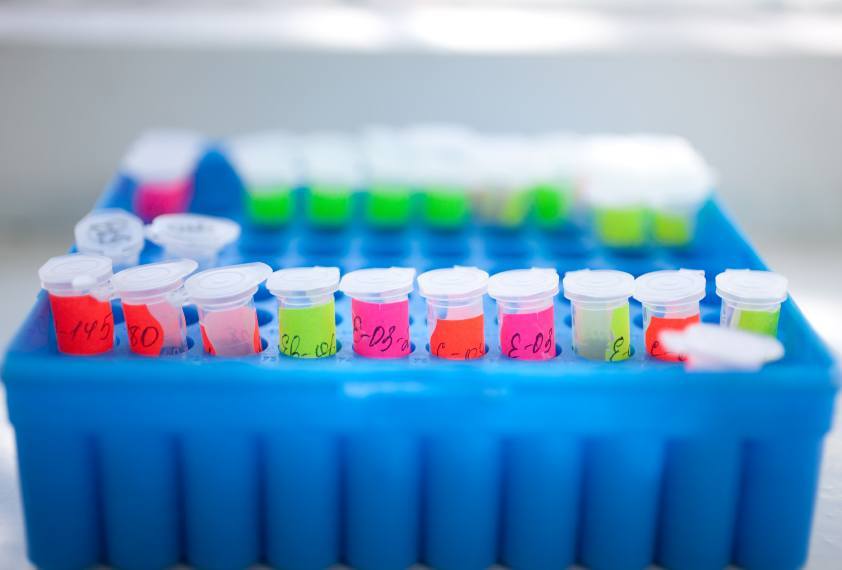The enduring assets of a laboratory’s work are the records that document those activities. When laboratory records are used to support a regulatory function, they are considered to be legal documents. It is of critical importance that data integrity is understood and adhered to by everyone working in the laboratory environment.
All it takes is one kink in the chain to destroy your laboratory’s reputation
For records to be considered reliable and trustworthy, they must comply with the following criteria:
- Legible and Understandable
- Attributable
- Contemporaneous
- Original
- Accurate
- Complete
- Consistent
- Indelible
- Available
1. Legible and Understandable
A record that cannot be read or understood has no value and might as well not exist. All records should be composed so they conform to grammatical convention which should be consistent throughout.
It is best to avoid buzzwords, cliques and slang as these are prone to change with time and are often not understood outside a particular locality. It is always good practice to have any record reviewed by a second person as this can often highlight any ambiguities.
2. Attributable
Attributable, The identity of the person creating a record should be documented. For paper records this is normally done by the individual signing and dating the record with their signature.
As the record you may be signing may be a legal document, you should clearly understand the implication of your signature.
A signature should be individual to a specific individual and the practice of signing someone else’s name or initials is fraud, and is taken very seriously.
3. Contemporaneous
All records must be made at the time an activity takes place. Delaying writing up, for example until the end of the day, will inevitably affect the accuracy of that record as details can be forgotten or miss-remembered.
Related: Train Your Staff in Laboratory Data Integrity
4. Original
All records must be original; information must be recorded directly onto the document. This avoids the potential of introducing errors in transcribing information between documents.
If information from an instrument is printed out, by the instrument, that printout is the original record and should be signed, dated and attached to the record.
5. Accurate
The record must reflect what actually happened. Any changes should be made without obscuring or obliterating the original information, the use of whiteout or correction fluid is prohibited.
Any changes made to a record should be signed by the person making the change and dated to show when it was made and a written explanation should also be provided.
Remember, the record may be needed after you have left the company and cannot be contacted for clarification.
6. Complete
The record must contain all information associated with the analysis of the sample, including system suitability tests, injection sequences, processing methods, sample preparation procedures and results.
This must also include any reinjections or repeat analysis performed on the sample.
Remember the position of the regulatory authorities for something that needs to be done is – ‘if it isn’t documented it’s a rumour’.
However, failing to disclose reanalysis or reinjection of samples will undermine confidence in the reliability of the records.
7. Consistent
Consistency in this context refers to the sequence of the component events, which the analytical method comprises, being performed in a logical order.
For example it is not possible to commence the HPLC run before the samples have been prepared, therefore the balance printout for the sample weights should be date/time stamped at least one or two hours prior to the sample injection time, to allow time to prepare the samples.
Therefore all date/time stamps should be in the expected sequence.
In order to avoid confusion in this respect, it is worth ensuring all instruments that produce date/time stamped printouts are time synchronised. This is best done by reference to a standard reference time, such as a national online time server.
8. Indelible
Indelible means the record must be legible for the lifetime of the record and once it has been made it cannot be removed.
Hand written entries of information should be made in ink and not pencil which can be erased
If printouts are made on thermal paper, which darkens with time, a photocopy should be made; this should be certified as an accurate copy of the original print and attached
If print outs are attached to a page they should be:
- Secured to the page with acid free glue and industrial strength Sellotape
- Signed and dated across the attachment and the page
- Annotated with a reference to the document
9. Available
All records should be available for inspection, audit and review for the lifetime of the document.
If a document is requested during a regulatory audit, it should be produced within thirty minutes.
Therefore, the laboratory should establish an easy to reference archive system. Records should be archived so as to preserve their integrity, such as
- Secure facility with restricted access
- Effective fire suppression
- Protection from dampness or humidity
- Controlled access to Document
Summary
This article is an extract from our online course on Laboratory Data Integrity, if you would like to see a demo of this course click here.
